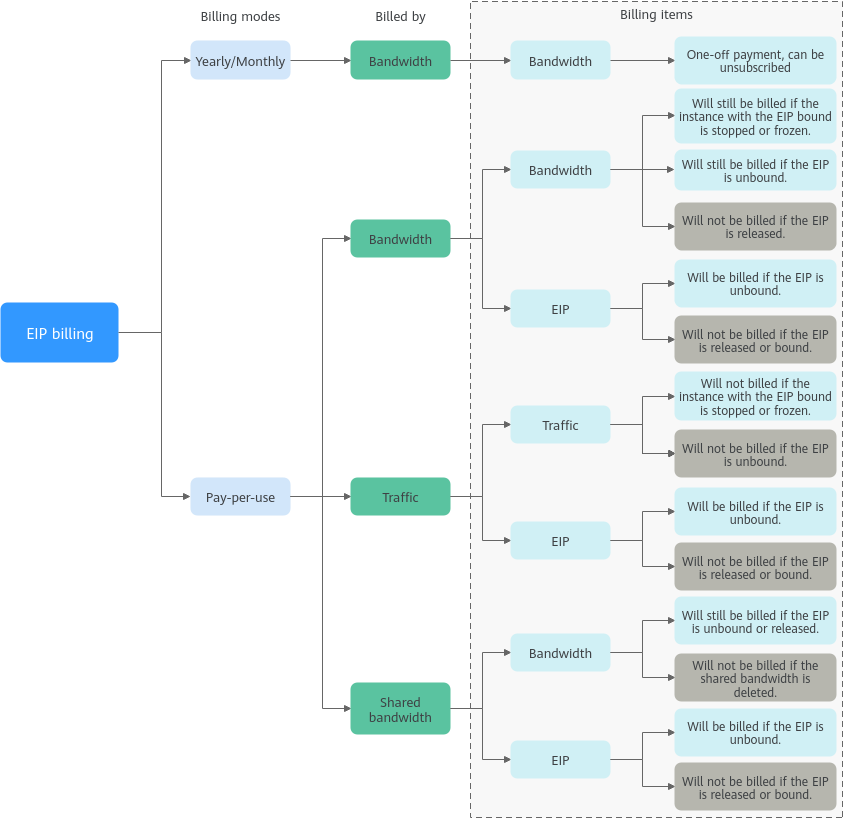|
Billing Mode |
Yearly/Monthly |
Pay-per-use (billed by bandwidth) |
Pay-per-use (billed by traffic) |
Pay-per-use (added to a shared bandwidth) |
|
Payment |
Prepaid
Billed by the subscription term you purchase. |
Postpaid
Billed based on your specified bandwidth size and usage duration. There is no limit on how much traffic you can use. |
Postpaid
Billed based on your EIP type and the total amount of traffic going out of the cloud. |
Postpaid
Billed by the shared bandwidth. |
|
Billing Method |
Billed by the subscription term you purchase. |
Calculated by the second but billed every hour |
Calculated by the second but billed every hour |
Calculated by the second but billed every hour |
|
Billed Items |
Bandwidth |
|
|
|
|
Billed Item Description |
If you buy a yearly/monthly EIP, you only need to pay for the bandwidth included in the subscription. You are billed based on your specified bandwidth size and usage duration. There is no limit on how much traffic you can use. |
- EIP: If an EIP is not released, it will continue to be billed even if it is not bound to an instance.
|
- EIP: If an EIP is not released, it will continue to be billed even if it is not bound to an instance.
|
If a pay-per-use EIP is added to a shared bandwidth:
- Shared bandwidth: Only the shared bandwidth will be billed. There will be no additional bandwidth or traffic costs for EIPs added to the shared bandwidth.
- EIP: If an EIP is not released, it will continue to be billed even if it is not bound to an instance.
|
|
Changing the Billing Mode |
Yearly/Monthly can be changed to pay-per-use (by bandwidth). |
Pay-per-use can be changed to yearly/monthly.
The new billing mode takes effect immediately. |
An EIP that is billed by traffic on a pay-per-use basis cannot be directly changed to be billed on a yearly/monthly basis. You need to change the EIP to be billed by bandwidth on a pay-per-use basis first, and then change the EIP to be billed on a yearly/monthly basis.
The new billing mode takes effect immediately. |
The billing mode cannot be changed. |
|
Changing Specifications |
Bandwidth can be increased or decreased. |
Bandwidth can be increased or decreased. |
Bandwidth can be increased or decreased.
The bandwidth size you set is only used to limit the maximum data transfer rate. |
Bandwidth can be increased or decreased. |









